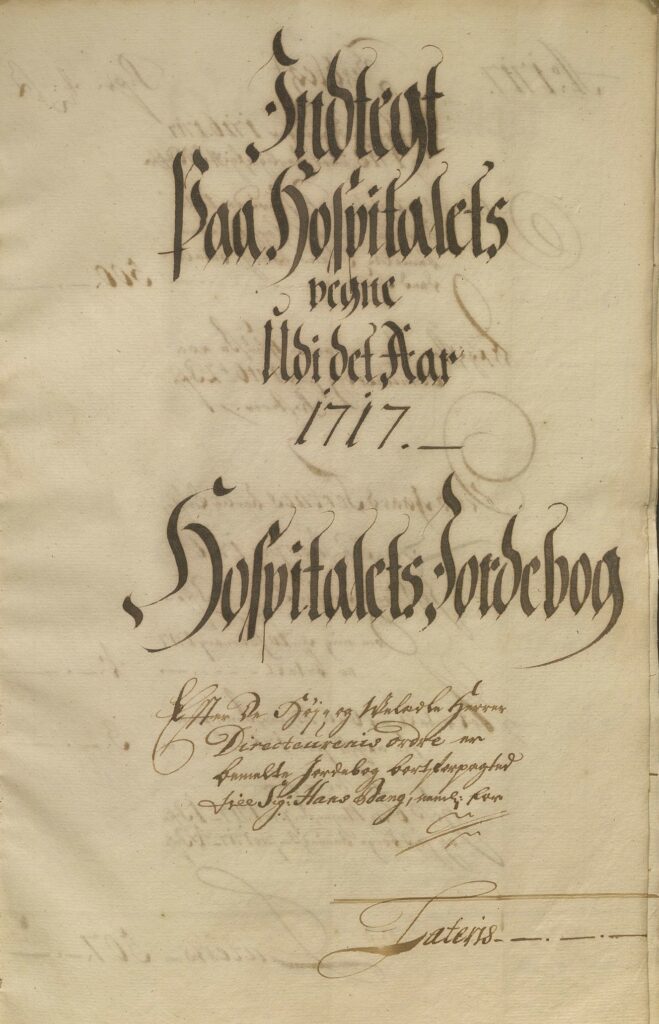The running of St. Jørgen’s Hospital
We have an understanding of how the hospital was run from the 16th century onwards, primarily through the hospital’s statutes. The oldest known statute is from 1545, when the foundation St. Jørgen’s Hospital was turned into a royal foundation. In the 17th century, the hospital twice received new statutes, the last time being in 1654. The last statute guided the operation of the hospital until the end of the 19th century.
Superintendent and carers
A superintendent was responsible for running the hospital, managing its finances and for keeping the hospital’s accounts. For a long time, there were only two carers to look after the residents. In addition, the chaplain also had a great responsibility. For a long time, it was the chaplain who kept a list of new arrivals. It wasn’t until 1817 that a surgeon was employed as the doctor at the hospital, which brought about little or no change to the residents’ everyday lives. When Daniel C. Danielssen was employed as a physician at St. Jørgen’s in about 1840, active research and curative trials were conducted for a few years. After two new state leprosy hospitals were established in Bergen in the mid-19th century, the hospital again became an institution that was primarily a place of residence for the sick.
The hospital’s finances
St. Jørgen’s Hospital has been run as a foundation since the Middle Ages. After the reformation, the foundation received around 180 farms from the land holdings of Selje monastery as a gift from the king. The rental income from these properties was to form the economic foundation for running the hospital. When this proved insufficient, they received the Tertnes farm outside Bergen from King Frederick ll in 1574. Other important sources of income were charitable donations, different kinds of fines and fees that befell the hospital, the inheritance of residents that passed away, and the hospital’s admission fees. The sick residents were to pay a fixed sum for the first two years of residence, while healthy residents were to pay a fixed sum to stay in the hospital for the rest of their life.



From the hospital’s accounts of 1717. The most significant sources of income came from land holdings and the admission fees paid by residents.
The Regional State Archives of Bergen.
For a long time, the hospital’s finances were poor, which impacted the living conditions of the residents. There were few staff and residents had to contribute by cooking and working to the extent that they were able. During periods of the 18th century, the distribution of money for food and board would sometimes be late. In the difficult years during and after the Napoleonic wars in the early 19th century, the conditions at the hospital were said to be particularly poor. From 1825, the hospital had the opportunity to sell the farms it owned, which significantly improved its finances for the rest of the 19th century. More staff were gradually employed to care for and assist the residents.



The largest expense was the residents’ food allowances. Wages and ‘Acquisition of firewood’ were also two of the largest expenses. From the accounts of St. Jørgen’s Hospital, 1717.
The Regional State Archives of Bergen.



